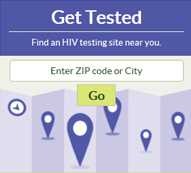Program Implementation FAQs
Second HIV Rapid Test
Question
The CDC NOFO PS18-1801, Strategy 4 indicates that a second HIV rapid test can be used as confirmation in a non-clinical setting. If this is the case, can the second test be accepted and adopted to a HIV testing algorithm? Will HIV Surveillance also accept this algorithm as a case report without laboratory base testing if performing testing in an outreach setting?
Answer
Two HIV screening tests done the same day are sufficient to meet the HIV surveillance case definition provided that the two tests are “orthogonal” as described in the CDC 2014 Revised HIV Case Definition. Being made by different manufacturers is one way tests may be considered orthogonal. The surveillance case definition allows the two tests to both be CLIA-waived point-of-care rapid tests. However, if the patient tests positive by a combination of such tests, the patient should be referred for additional testing by laboratories, due to the higher risk of false positivity among results from CLIA-waived tests done in point-of-care or nonclinical settings, rather than from the more complex non-CLIA-waived tests that can be done only in a laboratory.
Strategies and Activities Examples
Question
Are the strategies and activities provided in the NOFO just examples?
Answer
No. Recipients will be expected to implement the strategies and activities in the NOFO.
Logic Model Differences
Question
Can you please explain the differences in requirements in the logic model in the NOFO?
Answer
The first column of the logic model in the NOFO on page 4 shows the strategies and activities. All of the strategies and activities are requirements. The second column shows the short term and intermediate outcomes of the strategies and activities. Only the outcomes in the second column that are highlighted in bold will be monitored during the project period. The third column shows the long term outcomes of the project and these will not be monitored during the project period.
Systems Not Interconnected
Question
Based on the indicators, they seem very high level, but our systems don’t talk to each other. How are we supposed to measure these and do we decide how to report?
Answer
Applicants must include a draft M&E plan that describes how they would complete the requirements listed. CDC will provide support to recipients during the first 6 months of the funding cycle to finalize M&E plans.
Changing Health System
Question
Looking at the first indicator, it would require changing the health system?
Answer
CDC is unable to provide advice on how you could or would measure a specific indicator. CDC will provide support to recipients during the first 6 months of the funding cycle to finalize M&E plans.
Commercial Sex Workers
Question
It says one target group are commercial sex workers, is that a legal group? We don’t have any legal sex workers.
Answer
A commercial sex worker is not a legal group. This term is used to identify an individual that exchanges sex for money, goods or services. Goods can be items such as food, clothing, drugs, etc. Services can be a place to live, transportation, protection, etc.
Reporting Data Before Year-end
Question
The NOFO identifies an Annual Performance Report (APR) is due 120 days before end of funding period? Also, that it is a noncompeting application, how are we supposed to report data before the end of the year?
Answer
Please see table on the reporting schedule.
Budget Year |
Budget Period |
APR Guidance to Grantees |
APR Due Date |
APR Reporting Period |
Notes |
|---|---|---|---|---|---|
01 |
1/1/18–12/31/18 |
8/1/18 |
8/31/18 |
1/1/18–6/30/18 (6 months) |
Report shall provide an update of activities/strategies and outcomes achieved during the first 6 months of the current year (1/1/18–6/30/18). |
02 |
1/1/19–12/31/19 |
8/1/19 |
8/31/19 |
1/1/18–6/30/19 (18 months) |
Report shall address progress made in achieving outcomes during the prior calendar year (1/1/18–12/31/18) and an update of activities/strategies and outcomes achieved during the first 6 months of the current year (1/1/19–6/30/19). Data and associated information should be stratified by budget year (i.e., do not report as a single 18 months period). |
03 |
1/1/20–12/31/20 |
8/1/20 |
8/31/20 |
1/1/19–6/30/20 (18 months) |
Report shall address progress made in achieving outcomes during the prior calendar year (1/1/19–12/31/19) and an update of activities/strategies and outcomes achieved during the first 6 months of the current year (1/1/20–6/30/20). Data and associated information should be stratified by budget year (i.e., do not report as a single 18 months period). |
04 |
1/1/21–12/31/21 |
8/1/21 |
8/31/21 |
1/1/20–6/30/21 (18 months) |
Report shall address progress made in achieving outcomes during the prior calendar year (1/1/20–12/31/20) and an update of activities/strategies and outcomes achieved during the first 6 months of the current year (1/1/21–6/30/21). Data and associated information should be stratified by budget year (i.e., do not report as a single 18 months period). |
05 |
1/1/22–12/31/22 |
not applicable |
not applicable |
not applicable |
Typically an APR is not due in the final year of the Project Period. |
Annual Performance Report (APR) Appearance
Question
For the first year, we’re just starting out a project. What will the Annual Performance Report (APR) look like? It will take a while to make sure we can report.
Answer
CDC will provide APR guidance to the PS18-1801 NOFO recipients.
M&E Plan Assistance
Question
Can we start having that assistance now to develop the M&E plan?
Answer
CDC is not allowed to provide input on applications. However, all recipients of this NOFO will receive support from CDC.
Final NOFO Indicators
Question
Are the indicators in the NOFO final?
Answer
CDC will work with awardees to finalize their detailed Evaluation and Performance Management Plan (EPMP), including a Data Management Plan (DMP), in accordance with CDC program guidance.
- Page last reviewed: September 6, 2017
- Page last updated: September 21, 2017
- Content source:


 ShareCompartir
ShareCompartir


